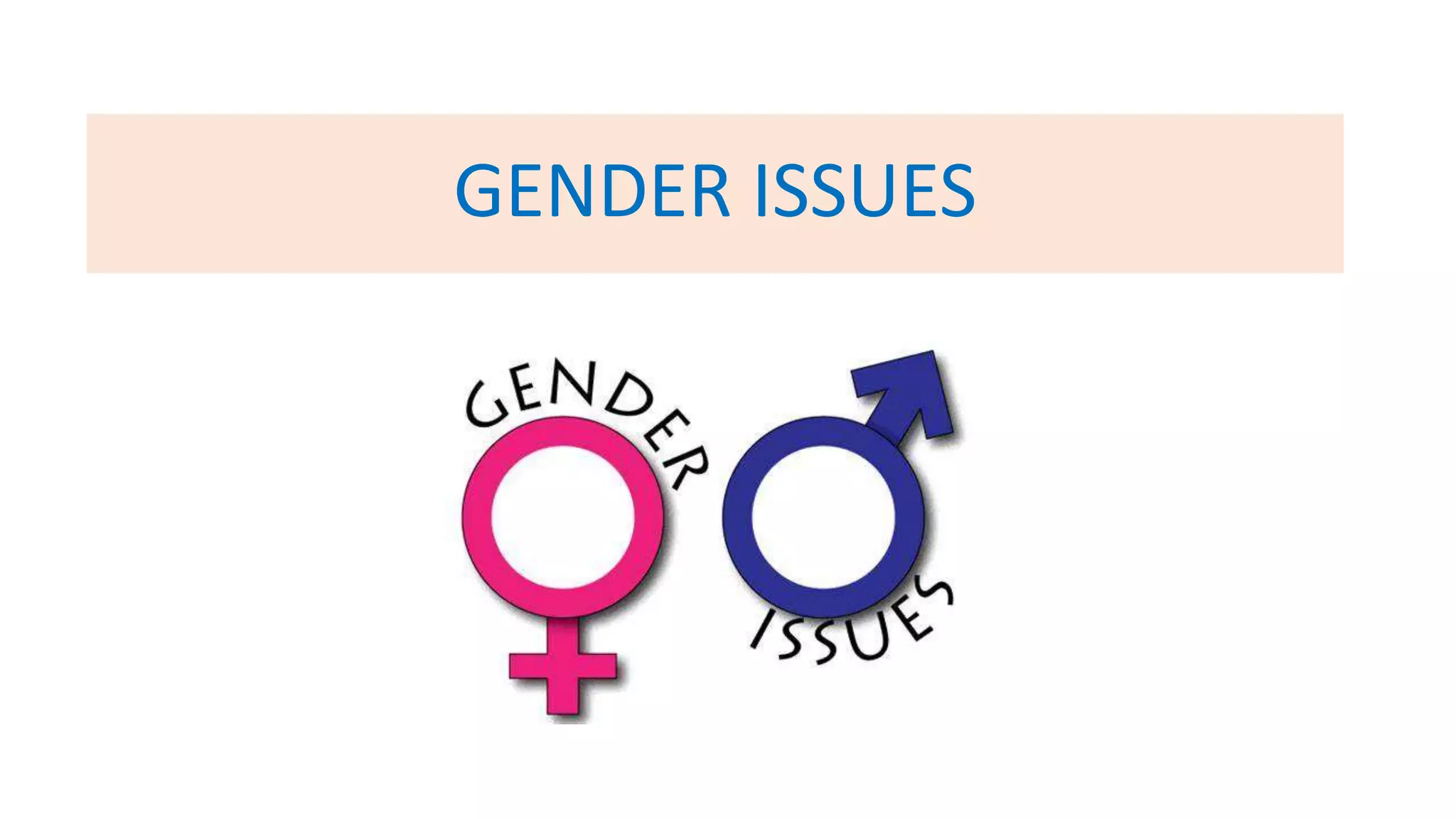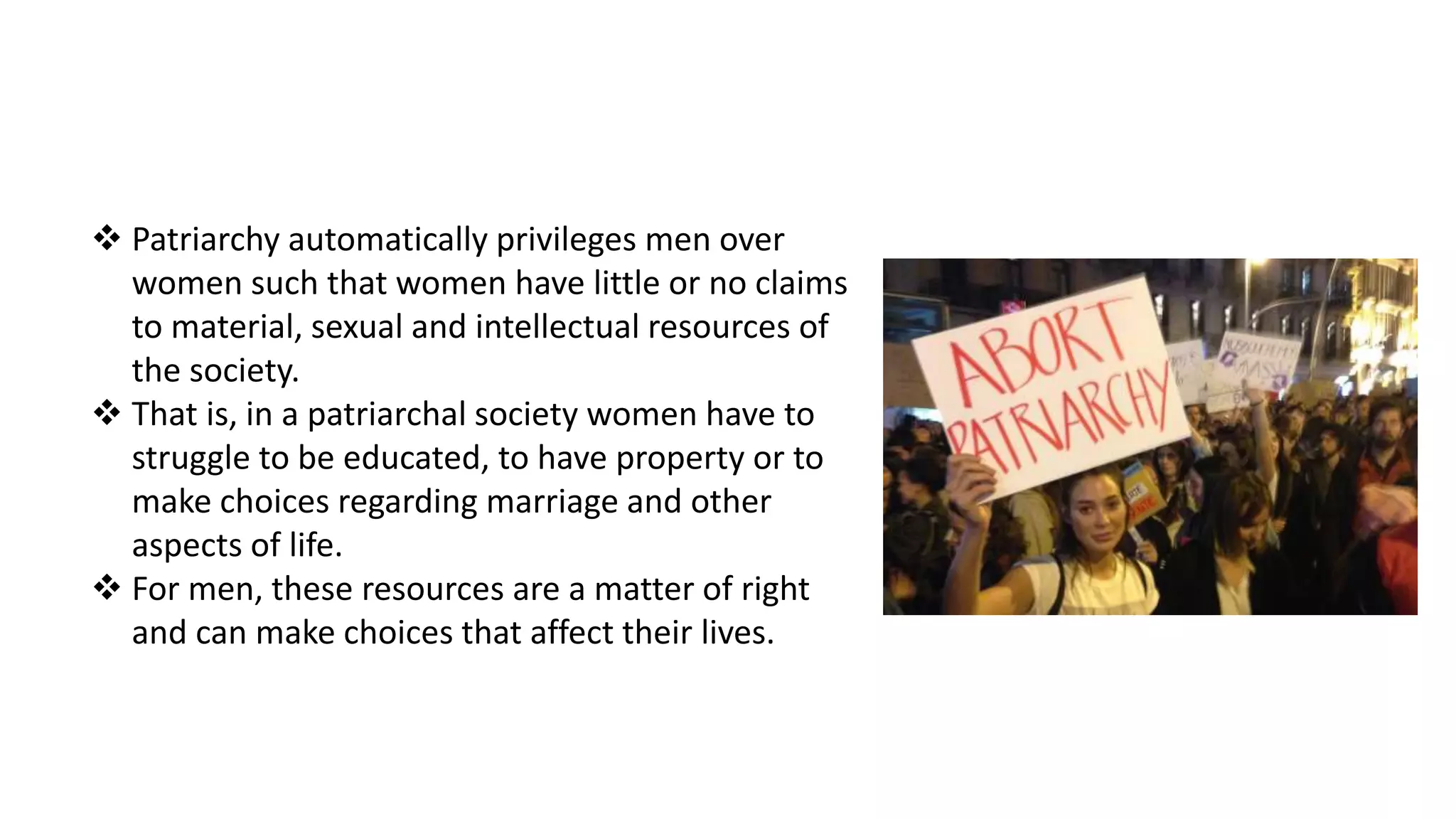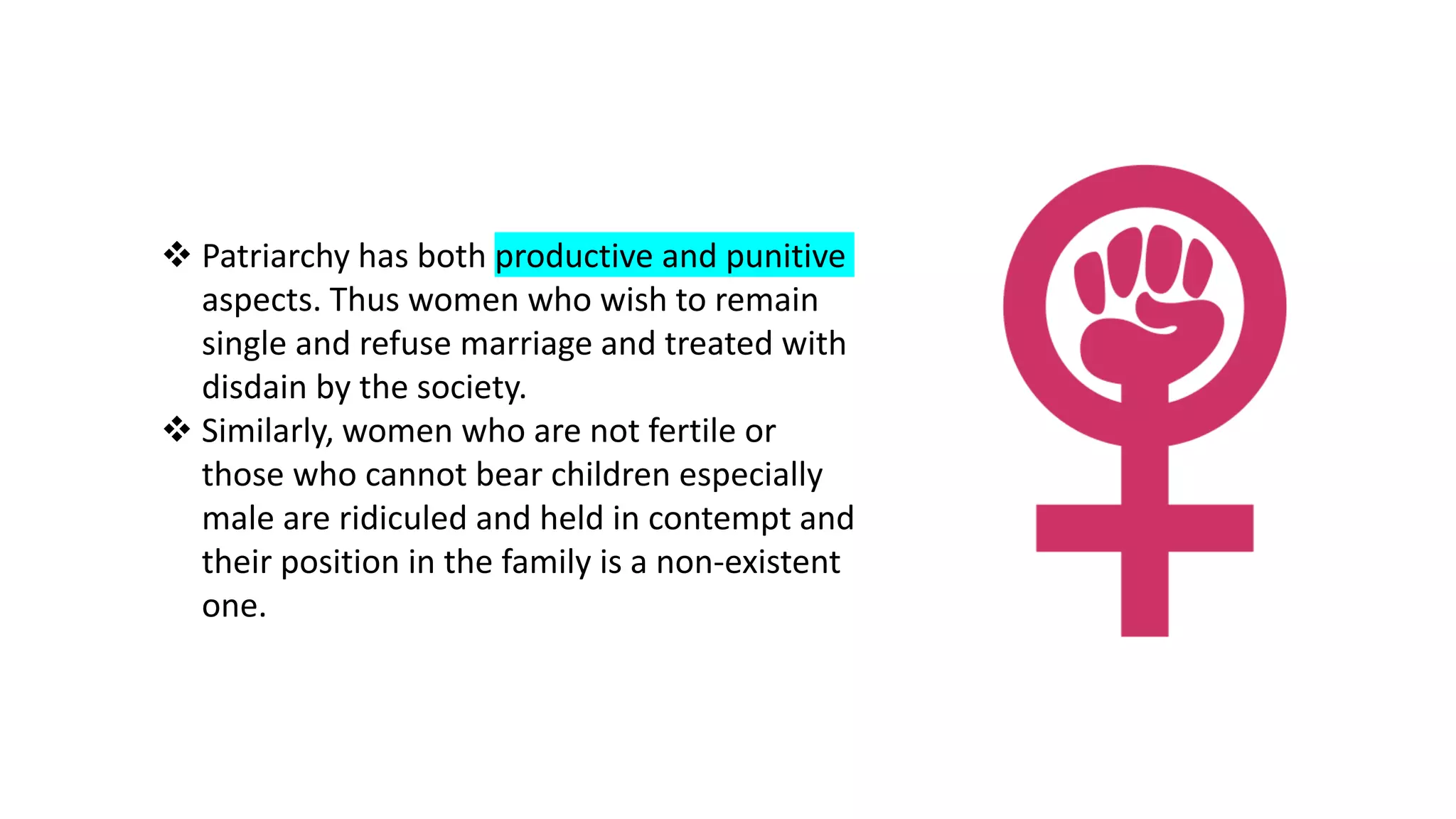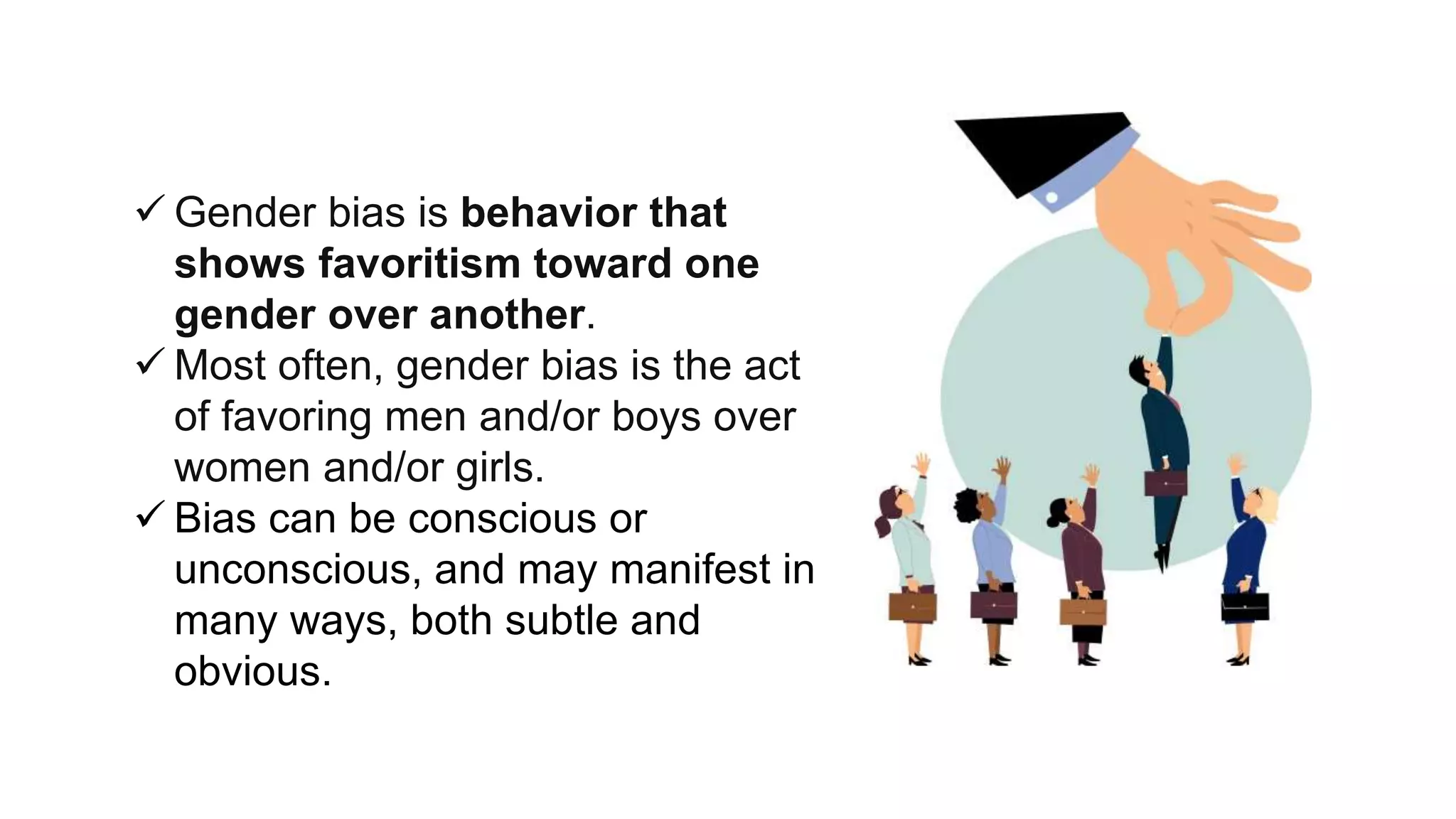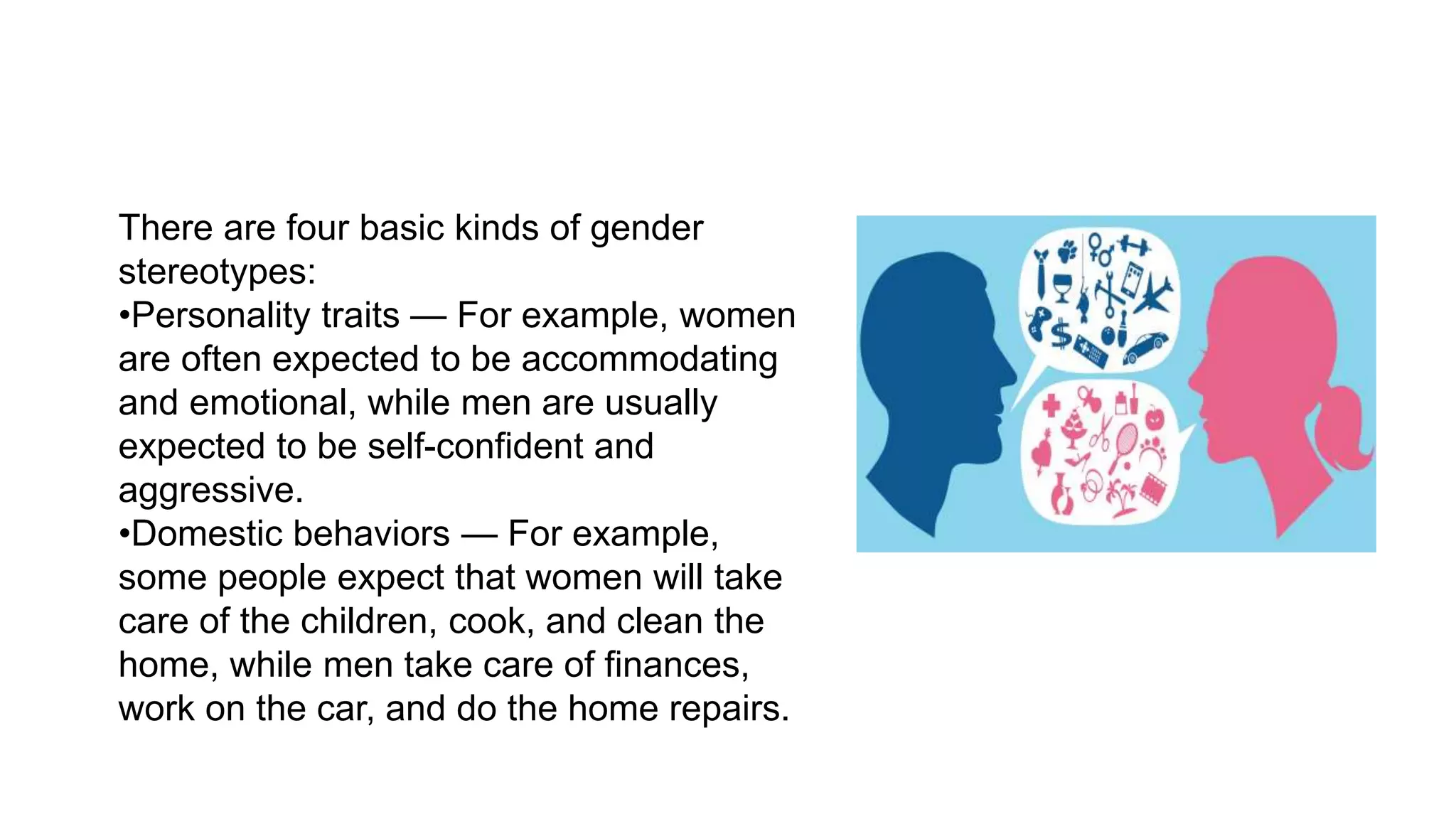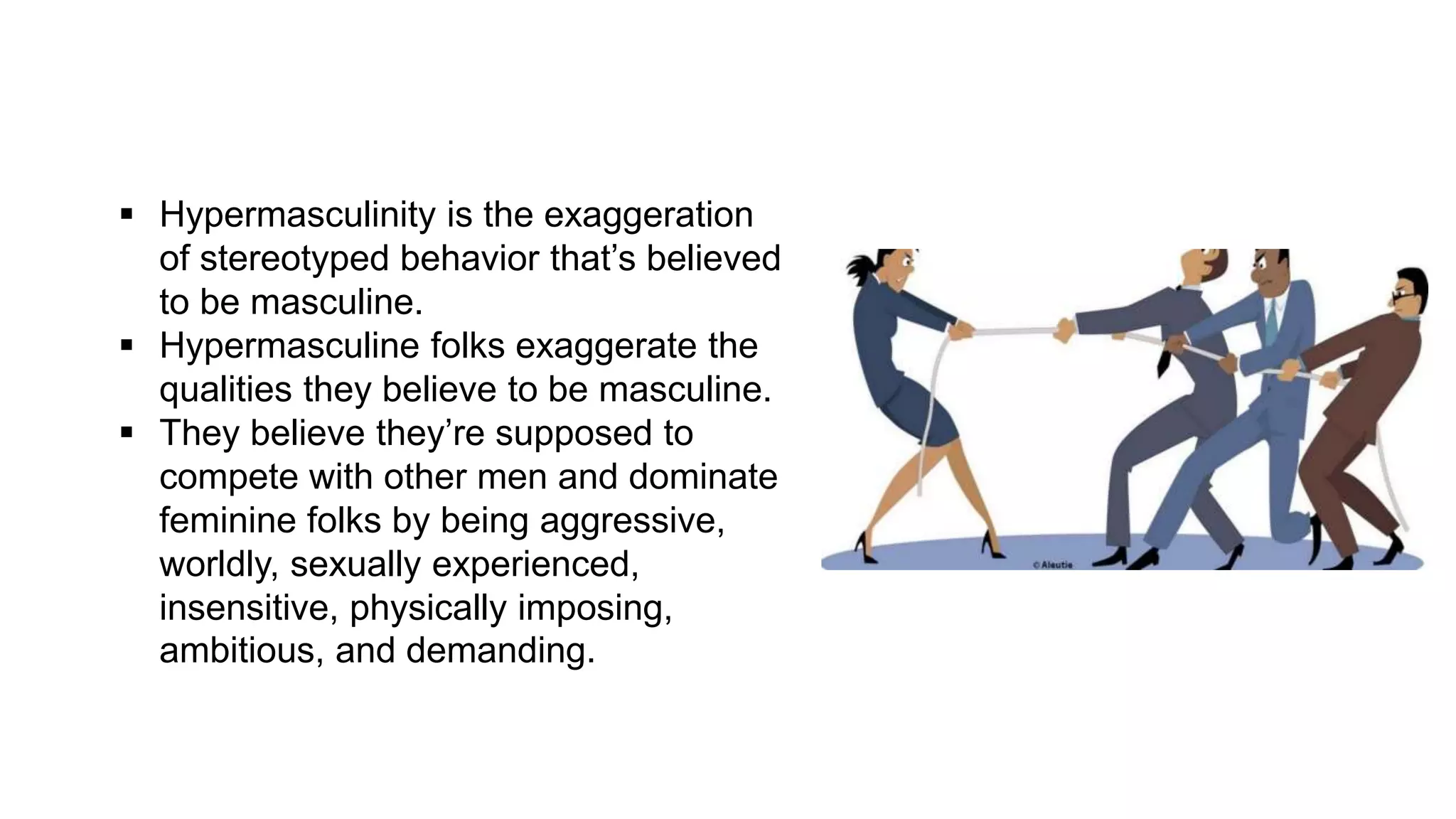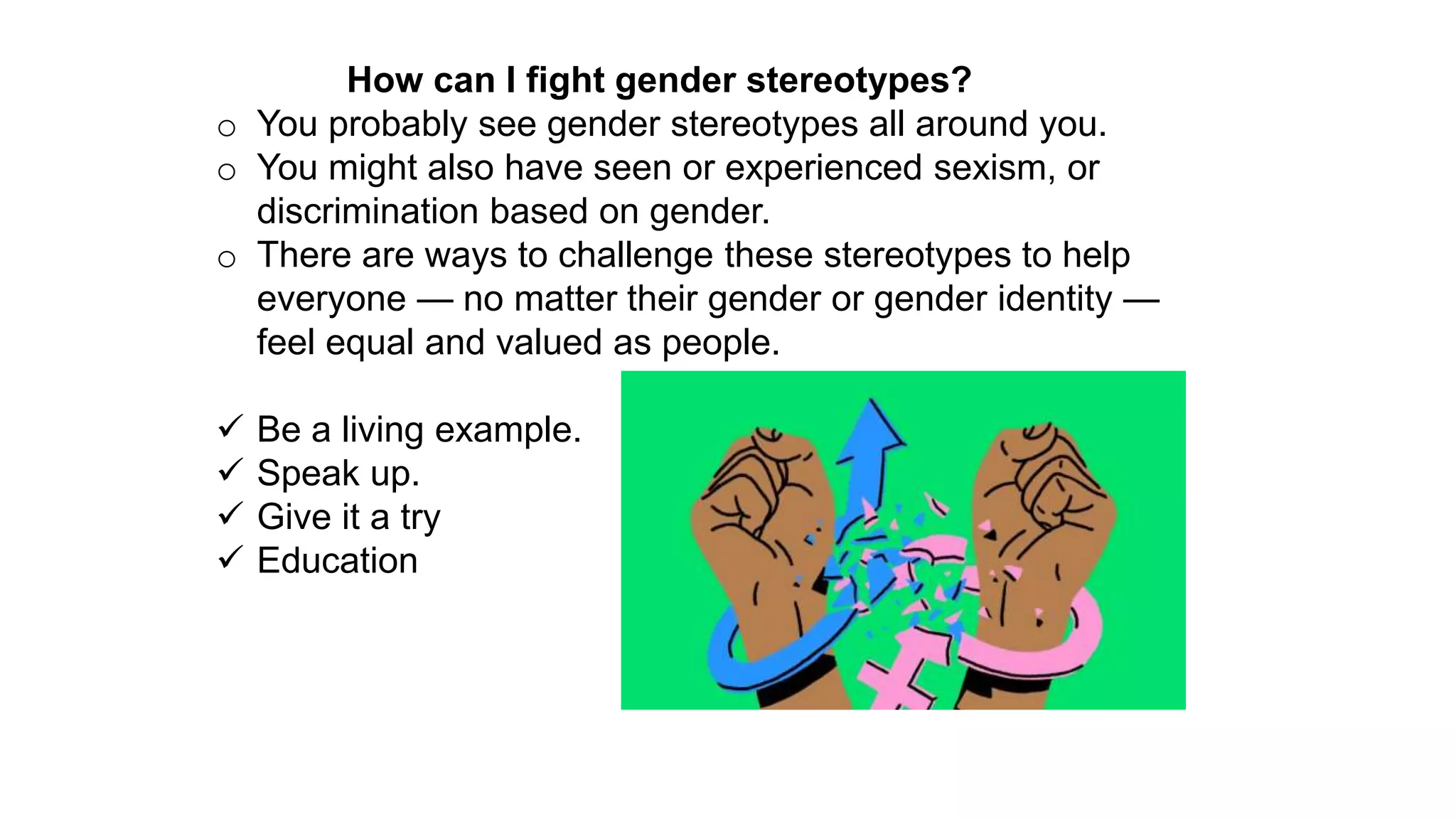The document discusses gender issues, focusing on concepts of gender, patriarchy, and gender bias. It highlights how gender roles are socially constructed and influenced by a patriarchal system that privileges men, along with the harmful effects of gender stereotypes and biases on both men and women. Additionally, it differentiates between equity and equality, emphasizing the importance of fairness and addressing individual needs within a society.

